Terpstra chance-less in Tour of Flanders breakaway
Etixx-Quick Step rider second for third Classic of the year
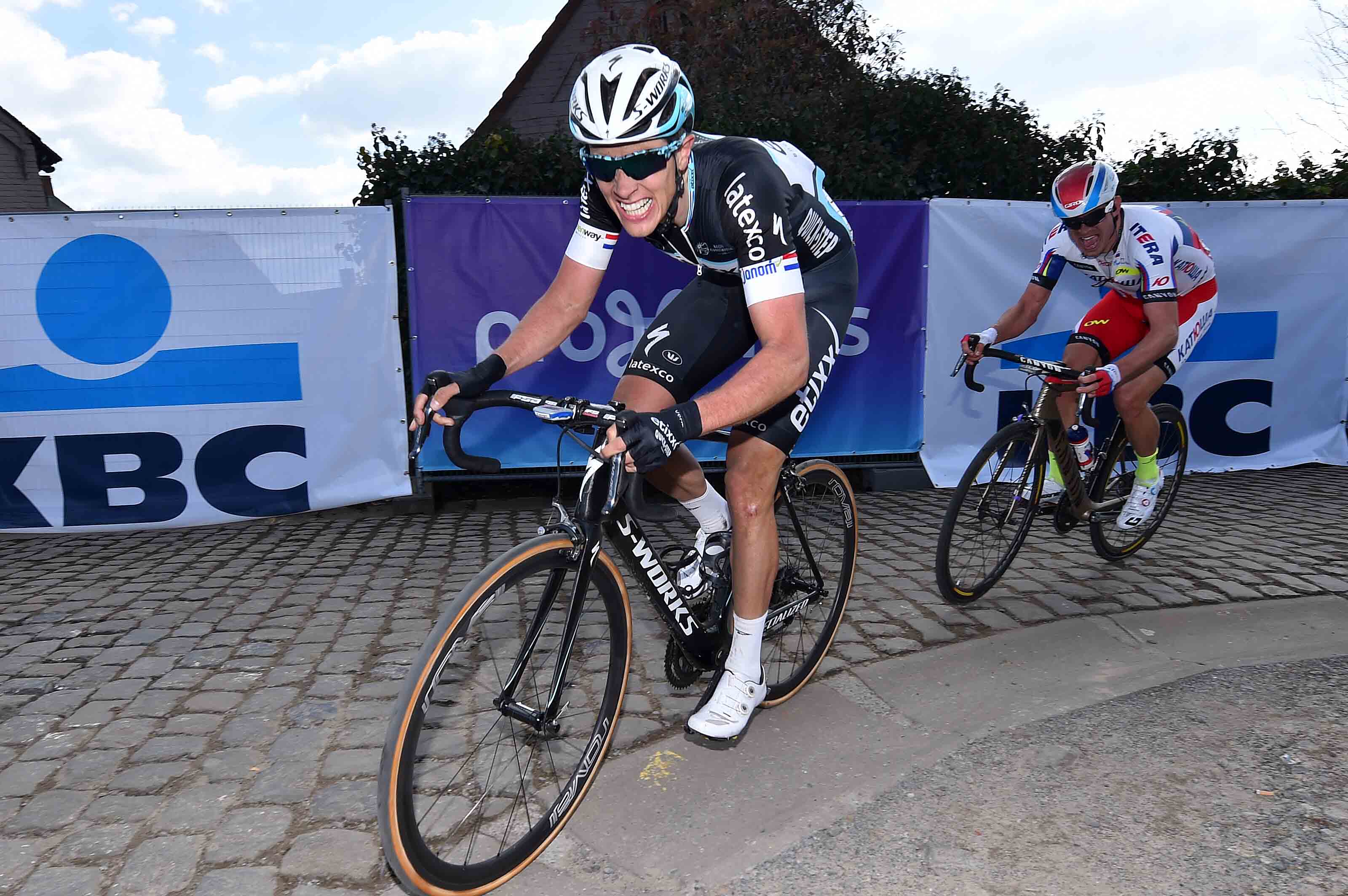
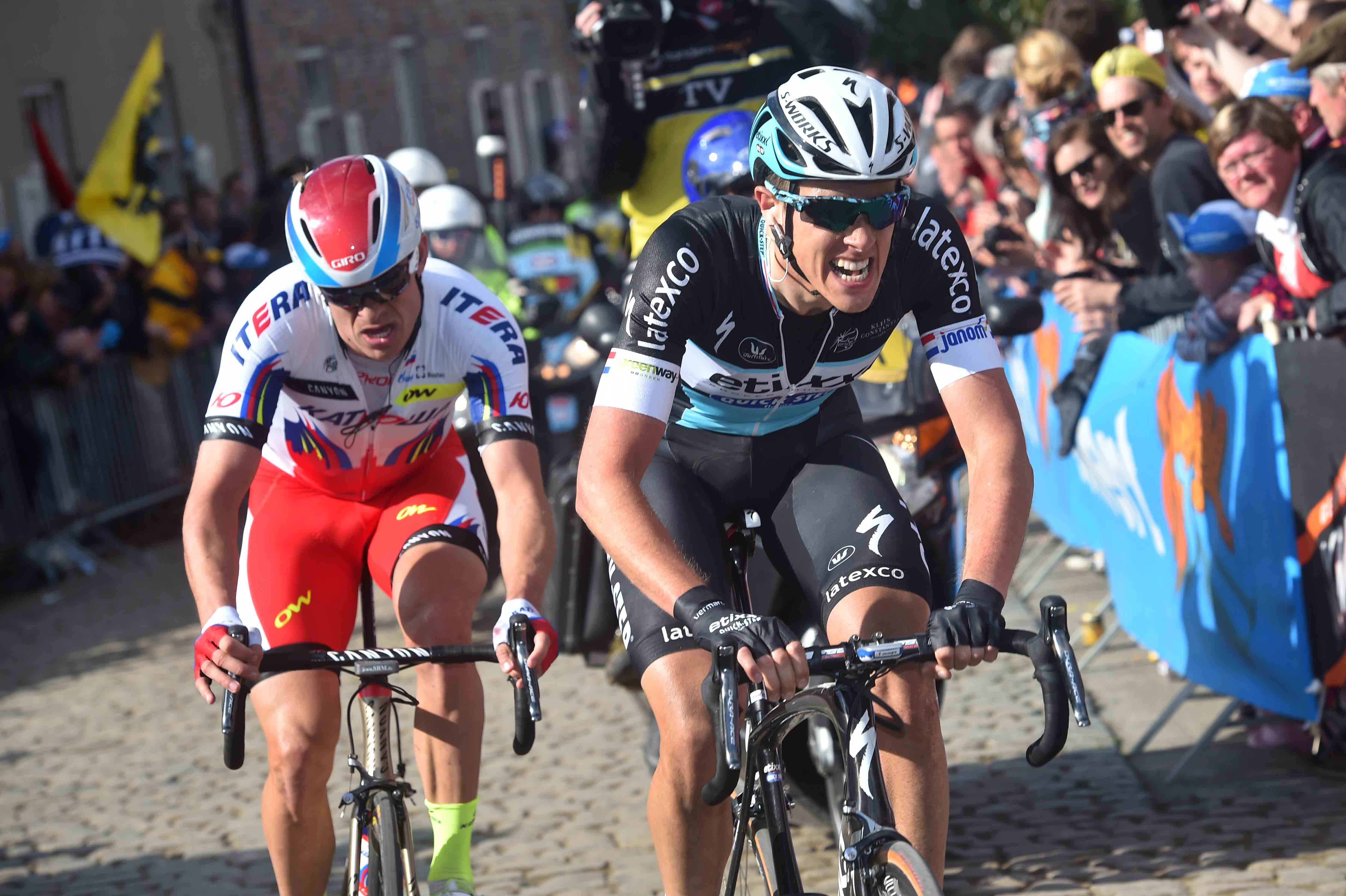
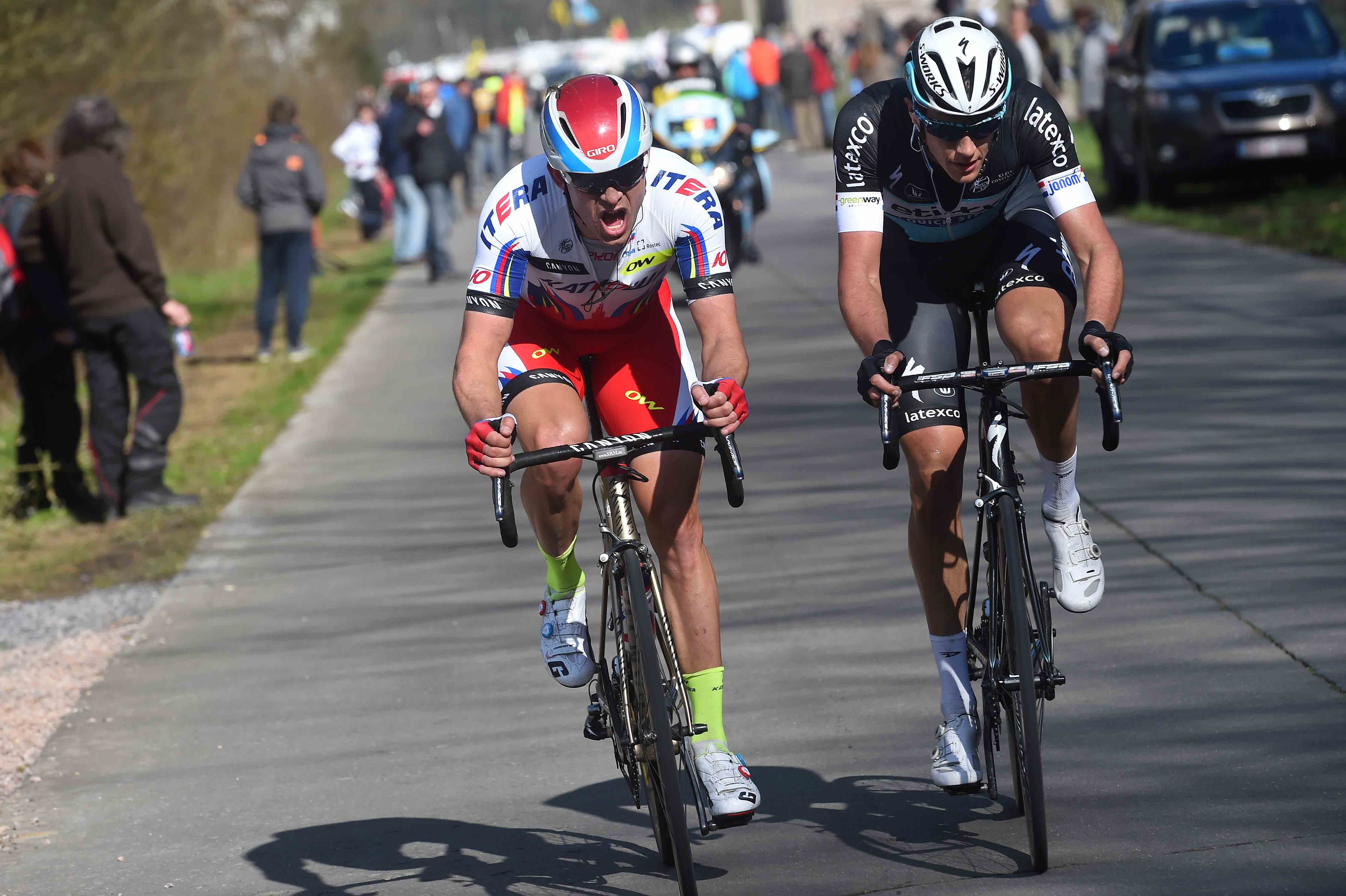
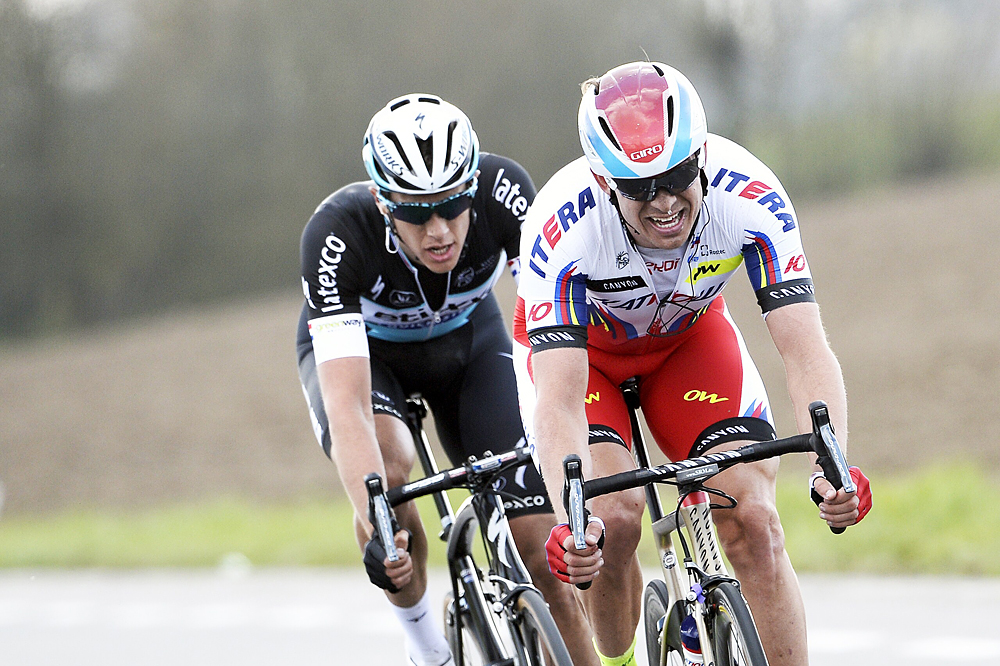
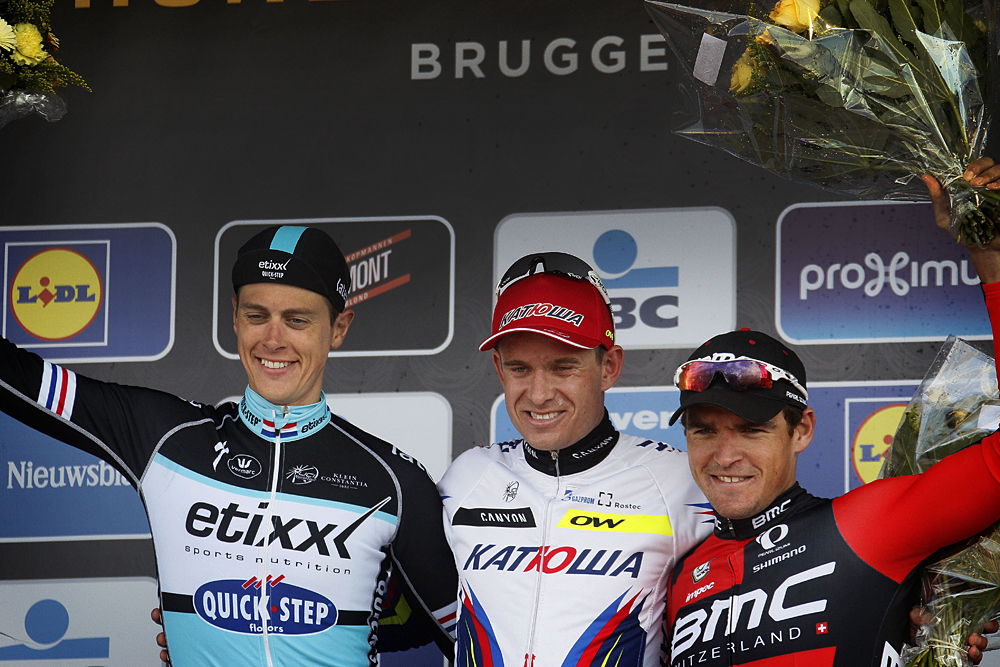
The Etixx – Quick-Step team is known to be a dominating factor in the spring classics, but in the absence of injured team leader Tom Boonen the team has had to be satisfied with second place once again, this time at the Tour of Flanders. Niki Terpstra made the decisive move at 28 kilometres from the finish on the Kruisberg, but brought along perhaps the most formidable opponent possible in Alexander Kristoff (Katusha), and had no chance of beating the on-form Norwegian.
“In the sprint he easily finished it. I came next to him and then he accelerated. He was the best,” Terpstra said, adding he felt that a late attack would only result in him losing the ideal position for the sprint. “With an attack I was chance-less. The outcome would probably have been that he would be on my wheel.”
The Dutchman didn’t have any regrets after finishing on the most unenviable position once again, after doing the same at the Omloop Het Nieuwsblad and Gent-Wevelgem.
“It’s yet another second place but he was simply better. After Gent-Wevelgem you can claim it was tactical and that I should’ve reacted when Paolini attacked. Now he was simply better.”
Team manager Patrick Lefevere was also satisfied with the second place, feeling it was the best possible result while riding without a dedicated team leader. Kristoff was his predicted winner.
“Sky controlled the race. Everybody was able to attack once or twice but they couldn’t make the difference. In the final 12 kilometres there was a headwind which was an additional factor to take into account. Niki did what he had to do in the final kilometres. If he waited earlier he would have finished fourth,” Lefevere said.
He didn’t like the excuses of some riders who said they would have been able to mark the move from Terpstra and Kristoff but decided not to do so for tactical reasons. “The two best riders rode away. Everybody knows that Alexander Kristoff was the fastest man. He was the top favourite and if he rides away then nobody should’ve hesitated. It’s clear that a race of 250 kilometres is not the same as a 200 kilometre race,” Lefevre said.
Get The Leadout Newsletter
The latest race content, interviews, features, reviews and expert buying guides, direct to your inbox!
A Dutch journalist asked Terpstra about a tactical suggestion from Michael Boogerd that said if he wanted to have a chance, he had to attack before the final ascent of the Oude Kwaremont. Terpstra was quick to reply with a wink. “I read the headline and that was enough. It wasn’t a planned attack. I followed his advice and it’s proven once more that Michael knows exactly how someone can finish as runner-up,” Terpstra said.
To subscribe to the Cyclingnews video channel, click here
Terpstra took the initiative in the race, and was the first of the favourites to play a card, attacking on the Taaienberg. “That was early enough,” Terpstra said. Later on the Kruisberg nobody marked his move except one rider. It turned out that the only rider that was able to join him was Kristoff, the one man that everybody wanted to drop.
“Yes, it was but in hindsight it was the best rider of today. At that moment I didn’t know that. I knew he was going really well, winning three stages in a row in the Driedaagse De Panne-Koksijde. He’s a rider who wants to ride. I hoped he was tired enough,” Terpstra said.
Tactically Terpstra tried to play the few cards he had in the final kilometres. He planned an attack on the Paterberg, the final climb of the day at 13 kilometres from the finish in Oudenaarde. On that final cobbled climb Kristoff took the lead and set a blistering pace, ruining Terpstra’s attacking plans.
“I felt really good and wanted to do a strong attack on the Paterberg [final climb of the day, at 13 km from the finish]. But he rode so fast that it was difficult to attack. I was able to keep up but it was hard to pass him,” Terpstra said.
Later Terpstra stopped co-operating in the move, almost allowing a comeback from chasers Greg Van Avermaet (BMC) and Peter Sagan (Tinkoff-Saxo).
“That’s why I remained on his wheel in the final three kilometres, to keep the pressure from behind. If they bridge up it’s a different story. He briefly got nervous but he must have felt that he was strong enough, he was confident enough. He hesitated a few times but then kept riding while I was on his wheel.”
Terpstra didn’t fancy a late attack in the final kilometre as he didn’t want to end up leading out the sprint for fast man Kristoff. “Then I was chanceless. The outcome would probably have been that he would be on my wheel.”
Next week Terpstra will line up in Compiègne with the number one dossard pinned on his back as last year’s surprising winner of Paris-Roubaix. Lefevre noticed that Terptra was the strongest on the flatter cobbled sections. “Niki was the strongest on the Oude Kwaremont but the more explosive riders manage to ride away on the Paterberg,” Lefevre said. The strong performance in Flanders will surely boost Terpstra and Etixx – Quick-Step’s morale ahead of the French monument.